
By David Eskenazi and Steve Rudman
The athletic careers of pro bowler Johnny Guenther, hydroplane driver Billy Schumacher, thoroughbred jockey Gary Baze, synchronized swimmer Traci Ruiz and rower Anna Mickelson Cummins collectively spanned more than six decades. All have one thing in common besides entering Halls of Fame in their various sports: Each received four Man or Star of the Year nominations and none won.
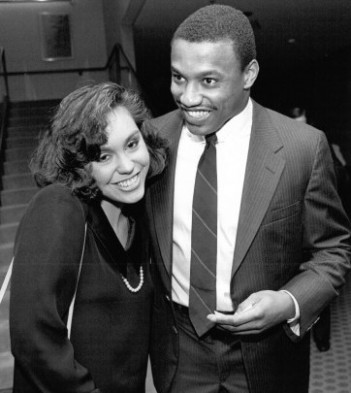
Guenther didn’t even make the ballot the year (1972) he won the biggest event in his sport, the PBA National Championship. Baze couldn’t win despite riding five Longacres Mile champions. Ruiz’s 41 gold medals in an array international competitions put her into the International Swimming Hall of Fame (1993), but didn’t translate into a Star of the Year plaque.
Mickelson-Cummins is one of two female rowers native to the state to medal in back-to-back Olympics, but a Star of the Year award eluded her as well.
The MOY/SOY has eluded many exceptional athletes since former Seattle Post-Intelligencer columnist Royal Brougham (1894-78) founded the awards program in the spring of 1936, with the intent of honoring the 1935 “Man of the Year.” Among those who didn’t win:
- 2 members of the Pro Football Hall of Fame (Canton OH.): Tony Canadeo (inducted 1974), Ray Flaherty (1976).
- 3 members of the Baseball Hall of Fame (Cooperstown, NY): Earl Averill (1975), Ryne Sandberg (2005), Ron Santo (2011).
- 3 members of the U.S. Olympic Hall of Fame (Colorado Springs, CO.): Bill Russell (1956), Phil Mahre (1992), John Stockton (2009).
- 4 members of the Basketball Hall of Fame (Springfield, MA.): Bill Russell (1975), Bob Houbregs (1987), John Stockton (2009), Dennis Johnson (2010).
- 5 members of the U.S. Figure Skating Hall of Fame (Colorado Springs CO.): Peter and Karol Kennedy (1991), Cynthia and Ronald Kauffman (1993) Rosalyn Sumners (2001).
- 5 members of the Rowing Hall of Fame(Mystic, CT.): Richard Wailes (1959), Dick Erickson (1991), Bob Ernst (1994), Matt Deakin (2010), Brian Volpenhein (2010).
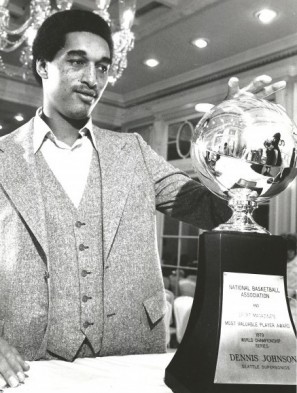
Dennis Johnson of the Sonics was named MVP of the 1979 NBA Finals, but failed to win the Star of the Year award, losing to Washington running back Joe Steele. / David Eskenazi Collection - 7 members of the College Football Foundation Hall of Fame (South Bend, IN): Jimmy Phelan (1973), Vic Markov (1976), Don Heinrich (1987), Bob Schloredt (1989), Max Starcevich (1990), Rueben Mayes (2008).
- 7 members of the Motorsports Hall of Fame (Detroit): Dean Chenoweth (1991), Ron Musson (1993), Chip Hanauer (1995), Tom D’Eath (2000), Mira Slovak (2001), Ted Jones (2003), Tom Sneva (2005).
- 7 members of the International Swimming Hall of Fame (Fort Lauderdale, FL.): Jack Medica (1966), Ray Daughters (1971), Dick Hannula (1987), Rick DeMont (1990), Traci Ruiz (1993), Candie Costie (1995), Mary Wayte (2000).
- 8 members of the USA Ski & Snowboard Hall of Fame (Ishpeming, MI.): Gretchen Fraser (1960), Donald Fraser (1972), Susan Corrock (1976), Phil Mahre (1981), Steve Mahre (1984), Debbie Armstrong (1984), Suzanne Chaffee (1988), Hillary Lindh (2005).
- 17 Olympic gold medalists, starting with Jack Medica in 1936 and ending with Mickelson-Cummins and in 2008 (Mary Whipple would have been on this list if she hadn’t won the Female Athlete of the Year at the 2012 program Friday at Benaroya Hall).
- 105 members of the State of Washington Sports Hall of Fame, beginning with Gretchen Frazier, inducted in 1960, and ending with John Olerud, inducted in 2011.
The 78th version Friday honored Seahawks running back Marshawn Lynch as Pro Athlete of the Year, Bremerton swimmer Nathan Adrian as Male Athlete of the Year and Whipple as the top female star. The following athletes and coaches are the most notable non-winners of Star of the Year awards:
1935-49
FREDDIE STEELE, boxing (1935, 1936, 1937): Steele made his pro boxing debut July 7, 1932, won the Pacific Northwest welterweight title in 1933, and became world middleweight champion Feb. 19, 1937, by scoring a unanimous, 15-round decision over Babe Risko at New York’s Madison Square Garden.
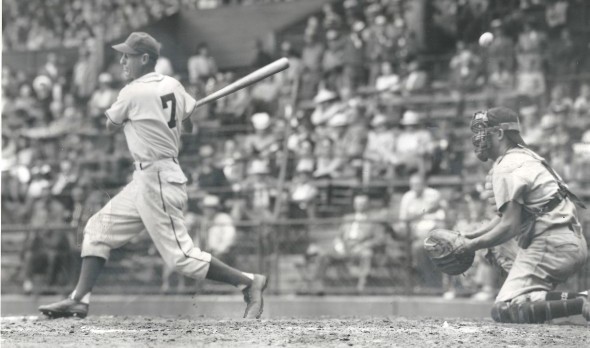
Steele was a Pacific Northwest champion for two years when he lost the 1935 Man of the Year award to referee Bobby Morris, and world middleweight champ for less than a year when he lost to high school football coach John Cherberg in 1937 (see Wayback Machine: Freddie Steele vs. Al Hostak).
JACK MEDICA, UW swimmer (1935, 1936): In 1935, Medica, the UW’s one-man swimming team, entered the National Collegiate Championships and swept three individual titles at 220, 440 and 1,500 yards, repeating his 1934 sweep.
Referee Bobby Morris denied Medica the 1935 Man of the Year award. Medica became a finalist again in 1936 after winning the 220, 440 and 1,500 at nationals for a third consecutive year, and then claiming a gold and two silver medals at the Berlin Olympics. But the Man of the Year went to UW crew coach Al Ulbrickson, whose eight scored a stunning Olympic victory over Games host Germany in Berlin.
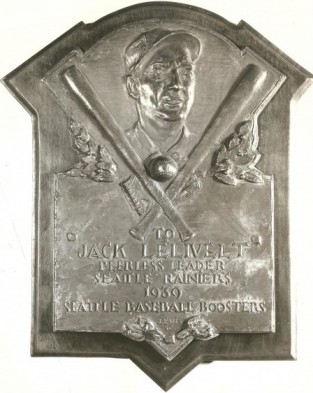
RAY DAUGHTERS, swimming coach (1935, 1936, 1946): Daughters, who coached Helene Madison to three Olympic golds in 1932 (see Wayback Machine: “Queen” Helene Madison), coached Jack Medica to three medals in 1936, and served as head USA swimming coach in 1936 (Berlin) and 1948 (London).
During his career, Daughters coached Washington Athletic Club swimmers to 30 world records, 301 American records and 64 national titles. Three times a Man of the Year finalist, Daughters lost to Morris (1935), Ulbrickson (1936) and conservationist Steve Morrissey (1946).
AL HOSTAK, boxing (1937, 1938, 1939): The Seattle native won the world middleweight title in 1938 (beating Tacoma’s Freddie Steele in front of 35,000 fans at Sicks’ Stadium). But on banquet nights as defending champ, he lost popular votes to Rainiers star Fred Hutchinson (1938) and UW football player Dean McAdams (1939).
In the latter year, Hostak and Adams tied in the voting. Banquet founder Royal Brougham ordered a runoff, and McAdams prevailed (see Wayback Machine: The Seattle Bombers).
JO JO WHITE, Seattle Rainiers (1939, 1941, 1946): White came to the Rainiers as part of a trade that sent local icon Fred Hutchinson to the Detroit Tigers (see Wayback Machine: The Rainiers & Pitchers Of Beer). A key component of three PCL title teams (1939-41), White lost Man of the Year awards to McAdams (1939), UW athletic trainer Click Clark (1941) and Morrissey (1946).
JACK LELIVELT, Seattle Rainiers manager (1938, 1939, 1940): Lelivelt presided over the greatest era in Rainiers history, one that included three consecutive PCL pennants (1939, 1940, 1941), two during his lifetime (see Wayback Machine: Jack Lelivelt’s Seattle Rainiers).
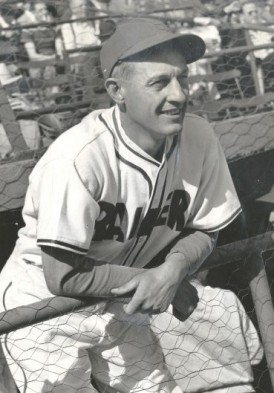
SAMMY WHITE, UW basketball, baseball (1945, 1952): A two-time (1948-49) All-Coast basketball player at UW, White is the only individual nominated for Man of the Year in two sports (see Wayback Machine: Sammy White, Art McLarney).
After also playing for the 1948-49 Husky baseball teams, the Wenatchee native signed with the Rainiers and eventually enjoyed an 11-year major league career, emerging as an All-Star catcher in 1953.
White became the only 20th century player to score three runs in one inning (vs. Detroit, June 18, 1953), ruined a Bob Feller no-hitter with a seventh-inning single May 1, 1955, and caught Mel Parnell’s no-hitter July 14, 1956 Parnell managed the Rainiers in 1963 (see Wayback Machine: Sammy White).
GRETCHEN FRASER (not nominated): A Tacoma native, Fraser (born 1919) launched her Alpine skiing career at Paradise on the south slopes of Mount Rainier in December 1932. Under the tutelage of Otto Lang, she became a proficient racer and later competed on the ski team at University of Puget Sound.
Fraser made her first Games team in 1940 when they were cancelled due to World War II and her second in 1948 when the Games resumed. A week shy of her 29th birthday, Fraser became the first American (man or woman) to win an Olympic gold medal in skiing, taking the slalom at St. Moritz. She also won a silver in combined.
KAROL & PETER KENNEDY, figure skating (1947, 1950): The Seattle figure skating pairs team captured five U.S. titles and one world championship, that in 1950 when they became the first Americans to win a world pairs championship.
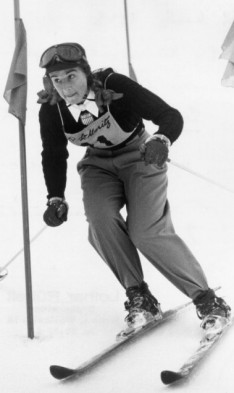
But the Man of the Year award in 1947 went to high school administrator Leon Brigham, and in 1950 to hydroplane pioneer Stan Sayres.
JACK NICHOLS, UW basketball (1948): During his college career, Nichols was named all-conference an unprecedented five times, twice with USC, and three times at UW (only player ever to achieve the feat).
In 1948 he set UW single-game (39 points vs. Idaho) and single-season scoring records for the Pacific Coast Conference. He was named Helms Foundation All-America, and led the Huskies to the 1948 NCAA tournament by beating Cal in a three-game series.
1950-59
TIPPY DYE, UW basketball coach (1951, 1953): Between 1951-59, his tenure at UW, Dye made two Man of the Year ballots and lost both times (to Hugh McElhenny in 1951 and Arnie Weinmeister in 1953), despite leading the Huskies into the NCAA Tournament twice, the Final Four once, and winning 20+ games three times (see Wayback Machine: Tippy Dye’s Life Well Lived).
JOHNNY GUENTHER, pro bowler (1954, 1959, 1965, 1966): One of the greatest bowlers to come out of Seattle, Guenther won 11 PBA titles during his Hall of Fame career, including the PBA National Championship in 1972, when he didn’t even make the Man of the Year ballot. His four MOY nominations without a win is tied for most in the event’s history.
DON HEINRICH, UW football (1950, 1952): In 1950, Heinrich led the nation in passing and became the first UW quarterback named first-team Associated Press All-America. Two years later (Heinrich did not play in 1951 due to injury), he again made first-team AP All-America, and remains today the only two-time, first-team AP All-America choice in school history.
But it didn’t help him at the Man of the Year awards. He lost to hydroplane driver/owner Stan Sayres in 1950 and to Johnny O’Brien of Seattle U. in 1952, after O’Brien had led a rousing upset over the Harlem Globetrotters (see Wayback Machine: Seattle U. Shocks The Globetrotters).
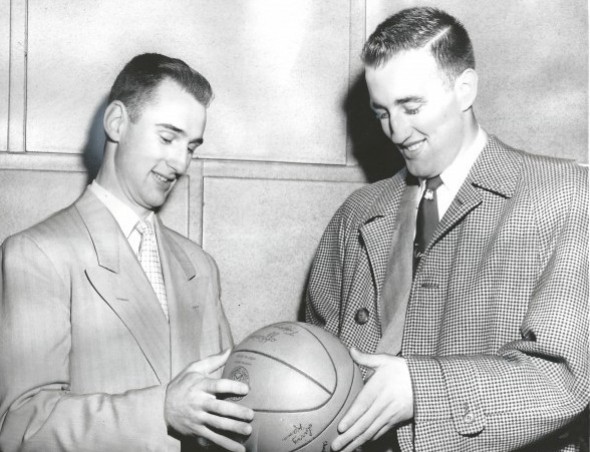
BOB HOUBREGS, UW basketball (1952, 1953): College basketball’s Player of Year, and a future Hall of Famer, led the Huskies to their only Final Four appearance in 1953 (see Wayback Machine: Bob Houbregs & The ’53 Final Four), but curiously lost to ex-UW football star Arnie Weinmeister of the New York Giants (a UW alum who had been away from Seattle for four years) at the 1953 awards, a year after losing to Seattle U.’s Johnny O’Brien (Houbregs was presented with the “Legend” award at 2011 program).
TED JONES, hydroplanes (1955): No individual exerted a more positive influence over the development of hydroplane racing — thunderboats.org called him “Father of Hydro Racing in Seattle” — than the architect of the Slo-Mo series of umlimiteds, which revolutionized the sport. More than any other, Jones brought hydroplane racing to Seattle, but was nominated for Man of the Year once (see Wayback Machine: Ted Jones Launches A Seattle Tradition).
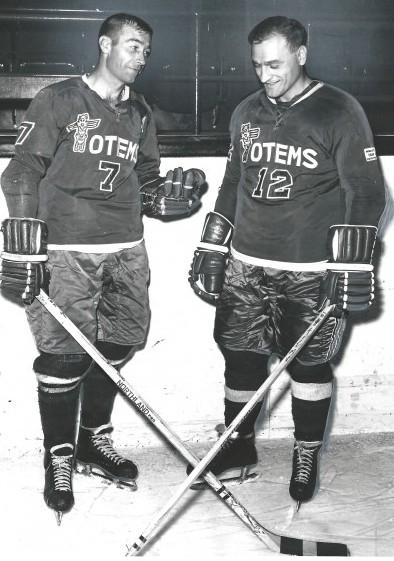
GUYLE FIELDER, Seattle Totems (1955, 1958, 1963): The six-time Western Hockey League MVP and 11-time All-Star (see Wayback Machine: Guyle Fielder & The Seattle Totems) couldn’t overcome Jim Whittaker, first American to summit Mount Everest, and pole vaulter Brian Sternberg (three world records), who shared the 1963 award. Fielder also lost to golfer Pat Lesser in 1955 and Elgin Baylor in 1958 (see Wayback Machines: The Two Lives Of Elgin Baylor and A Bakery That Cooked Up Basketball).
BOB SCHLOREDT, UW football (1959): The University of Washington QB, named All-America after leading the UW to its first Rose Bowl since 1944, lost to his coach, Jim Owens (Schloredt not nominated in 1960 after winning second consecutive Rose Bowl MVP award, the nod going to teammate Don McKeta).
BILLY SCHUMACHER, hydroplanes (1956, 1967, 1971, 1975). Schumacher, who set 12 world records in outboards and unlimiteds, is the only individual nominated in three decades for the Man of the Year award and not win.
RICHARD WAILES (not nominated): A Seattle native, Wailes graduated from Yale and was part of two USA gold-medal shells, the eight in 1956 in Melbourne and 4 without cox at Rome in 1960. No individual rowers made the Man of the Year ballot in either of those years. After his rowing career, Wailes helped form “Sing-Out ’65,” which became “Up With People.”
1960-69
Charlie Greene, Track & Field (1965-66): An O’Dea product, Green couldn’t win in either 1965-66 when, competing for the University of Nebraska, he won two NCAA 100-meter titles and the same event at the National AAU Championships. Not only that, Green failed to receive a nomination in 1968, when he twice broke the world 100-meter record at the AAU Championships and won an Olympic gold medal (4×100 relay) in Mexico City.
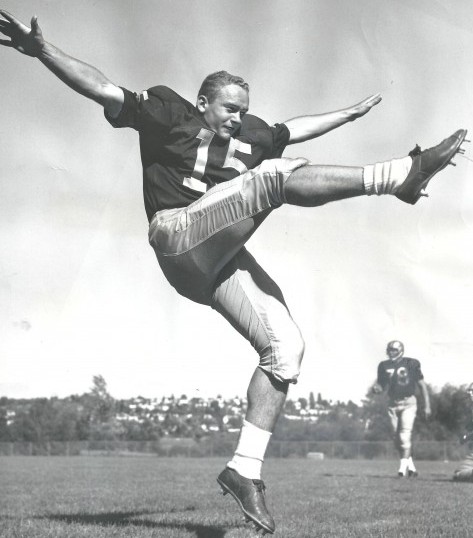
Gerry Lindgren, WSU runner (not nominated): Lindgren won 11 of the 12 NCAA cross-country events he contested while a student at Washington State, set a six-mile world record in 1965, held national records at 3,000 and 5,000 meters, and was national champion at 10,000.
But nothing Lindgren did gained him more enduring fame than his performance in the USA-USSR track meet when, as largely unknown 17-year-old in 1964, he outran two seasoned Russians, Leonid Ivanov and Anatoly Dutov, to win the 10,000 in front of 50,515 fans at the Los Angeles Coliseum. Lindgren opened up a 20-yard lead at the four-mile mark and steadily widened his margin, finally winning in 29:17.6, with more than 100 yards to spare.
Bill MacFarland, Seattle Totems (1962, 1967): Nominated after he led the Seattle Totems and Western Hockey league in goals (46) and won the MVP award, MacFarland (see Wayback Machine: Bill MacFarland & The Totems) lost to hydroplane driver Bill Muncey (1962) and high school administrator Harvey Lanman (1967) after MacFarland became the Totems’ head coach.
Larry Owings, UW wrestling (1969-70): If ever a wrestler could have been named Man of the Year, it was Owings in 1970, after he defeated the legendary Dan Gable, undefeated in high school and college (Iowa), to win the NCAA wrestling Championship in a shocker so stupendous that it is always included in any list of the greatest sports upsets of all time.
Ron Santo, baseball (1960, 1961, 1964): An All-Star with the Cubs, Santo was a three-time finalist, but lost to UW football player Don McKeta in 1960, golfer Anne Quast-Decker in 1961 and UW linebacker Rick Redman in 1964. Santo entered the Baseball Hall of Fame in 2011, not long after his death.
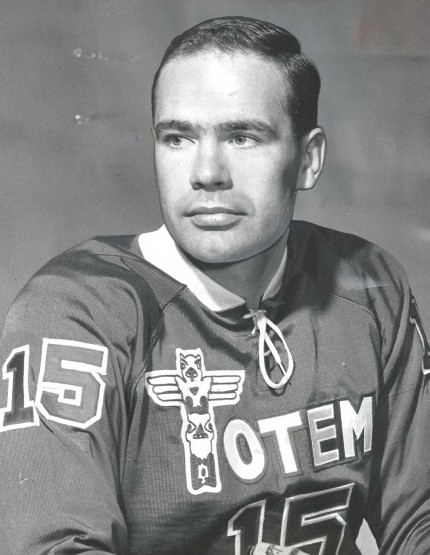
Joyce Tanac, Gymnastics (1969): Tanac, who competed for the Seattle YMCA and UW, would have been an excellent MOY choice since she had done something unprecedented: At the 1969 AAU National Gymnastics Championships, Tanac made a clean sweep of all five events, winning golds in the all-around, balance beam, floor exercise, uneven bars and vault. No wonder that Tanac, who began tumbling in Seattle at the age of 10, entered the U.S. Gymnastics Hall of Fame in 1990.
Al Worley, UW Football (1968): Worley played defensive back at UW from 1966-68. As a senior, he became a consensus All-American after setting the still-standing NCAA record of 14 interceptions in a season. Notably, Worley accomplished this feat in a 10-game season, but lost the MOY vote to Olympic swimming champion Kaye Hall.
Dave Williams, UW football (1967): Remarkable about Williams (see Wayback Machine: Dave Williams’ Amazing Legacy) is that 44 years after his career (1964-67) ended, he still ranks No. 2 on the list of receiving yards by a UW tight end (1,133), No. 2 in single-season yards (795), No. 1 in single-game yards by a tight end or a receiver (257), No. 1 in single-game TDs by a tight end (3), and tied for No. 1 in career TDs by a tight end (10) and receptions by a tight end in a game (10, twice). Williams, who qualified for the U.S. Olympic decathlon trials in 1964, didn’t make the ballot in the year many of those records were set, 1965, when the MOY went to high school coach John Goodwin.
1970-79
Gary Baze, Longacres jockey (1973, 1974, 1982, 1985): In the long history of the Man/Sports of the Year awards, only one thoroughbred jockey ever prevailed in the voting, Gordon Glisson in 1949. In Baze’s four yearson the ballot, tied for the most among non-winners, he twice won Longacres riding titles (1973, 1974) and twice won the Longacres Mile (Trooper Seven in 1982 and Chum Salmon in 1985).
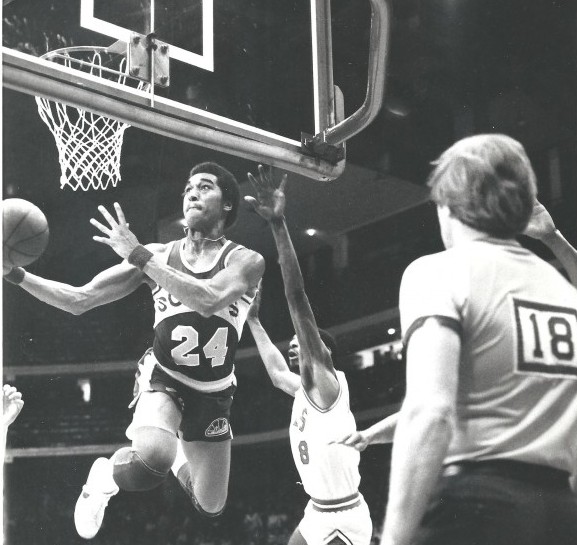
Dennis Johnson, Seattle SuperSonics (1979): Despite the popularity of the Sonics, who won their only NBA championship, the Star of the Year award went to UW running back Joe Steele, who broke numerous rushing records that had been set by Hugh McElhenny 28 years earlier.
Scott Nielson, UW track (1978): By the time Nielson graduated from Washington in 1979, he won seven NCAA track titles, four in the hammer and three in the 35-pound weight throw, a feat equaled only by Oregon’s legendary Steve Prefontaine. Nielson lost to Lenny Wilkens the only year he appeared on the ballot.
Sugar Ray Seales, boxing (1972, 1977): Seales failed to win the MOY in the year he won a gold medal at the Munich Olympics (1972) and in the year (1977) in which he became world middleweight champion. Tom Gorman (1972) and Warren Moon (1977) prevailed in Seales’ two years on the ballot.
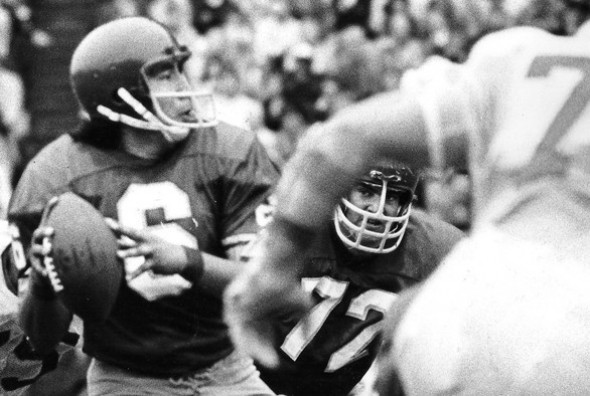
Sonny Sixkiller, UW football (1970): The Huskies icon, who became wildly popular after setting a single-season passing record, received his first and only Star of the Year nomination, but lost to Seattle Pacific University cross-country star Doris Brown (see Wayback Machine: Sixkiller Becomes An Icon).
Jack Thompson, WSU football (1978): The Throwin’ Samoan was nominated for the award in 1976 and 1978. Thompson completed his career with 7,818 yards and 53 touchdown passes, most in Pac-8 history, but lost to Slick Watts in 1976 and Lenny Wilkens in 1978.
Jim Zorn, Seattle Seahawks (1976, 1978): The Seahawk quarterback was at the height of his popularity in the late 1970s, but lost both times he was named a finalist. In 1976, Slick Watts of the Sonics won, and in 1978 Wilkens won.
1980-89
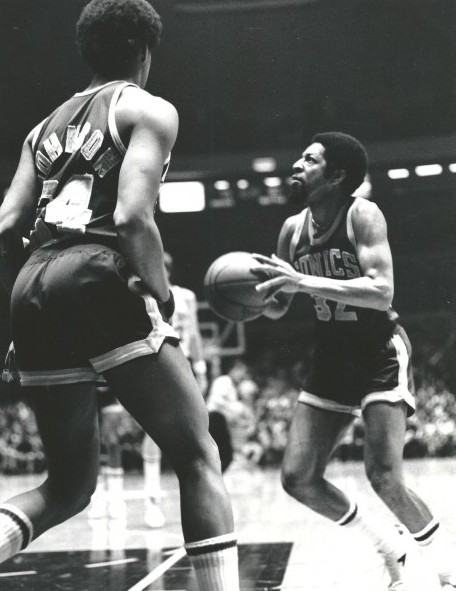
Fred Brown, Seattle SuperSonics (1981): Brown became a finalist only once in his 13-year career and lost to University of Washington football coach Don James, whose Huskies were coming off a Rose Bowl shutout over Iowa.
Chris Chandler, UW football (not nominated): Several Huskies appeared on the ballot in the 1980s, including Chuck Nelson (winner, 1982), Steve Pelluer (1983), Joe Kelly (1985), Reggie Rogers (1986), David Rill (1987) and Bern Brostek (1989). Chandler became a two-time bowl game MVP during this period (1985 Freedom, 1987 Independence), but never received a SOY nomination.
Alvin Davis, Seattle Mariners (1984): Unlike Kenny Easley, who never made the ballot, Davis did, but lost to Seahawks coach Chuck Knox, who defeated an impressive list of finalists, including five Olympic gold medalists: Debbie Armstrong (skiing), Bill Buchan (sailing), Tracie Ruiz (synchronized swimming), Mary Wayte (swimming) and Betsy Beard (rowing), plus Ron Holmes, a UW All-America defensive lineman.
Kenny Easley, Seattle Seahawks (not nominated): Although Easley became the only strong safety named the NFL’s Defensive Player of the Year (1984), he wasn’t a Star of the Year finalist (Hawks coach Chuck Knox won) following his best season. In fact, Easley never sat at the head table.
Chip Hanauer, hydroplanes (1982, 1985, 1990): The seven-time hydroplane national champion was nominated three times, but lost in ’82 (UW kicker Chuck Nelson), ’85 (Seahawks WR Steve Largent) and ‘90 (UW RB Greg Lewis).
Dave Krieg, Seattle Seahawks (not nominated): Krieg started at QB for the Seahawks for nine years and made three Pro Bowl appearances, but was never nominated (Curt Warner, Chuck Knox, Steve Largent, Fredd Young and John L. Williams all won during Krieg’s tenure with the team).
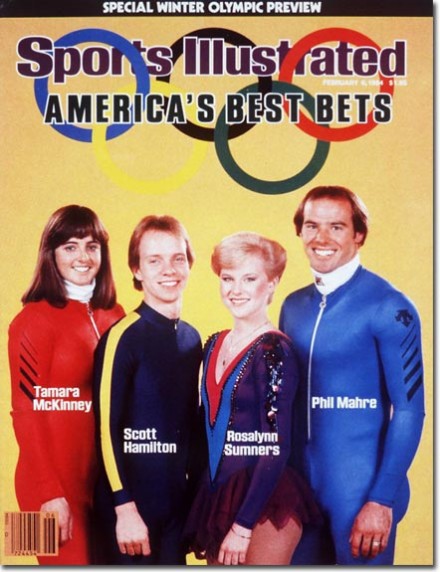
Phil Mahre, alpine skiing (not nominated): Despite capturing three consecutive World Cup overall titles (1981-83) and an Olympic gold medal in the 1984 Sarajevo Olympics, the White Pass native never reached the head table. During Mahre’s greatest years, SOY winners included Don James (1981), Chuck Nelson (1982), Curt Warner (1983) and Chuck Knox (1984).
Traci Ruiz, synchronized swimming (1981, 1983, 1984, 1988): Ruiz won 41 gold medals in Olympic (two golds, one silver), World, Pan American and various other international competitions, and might have won a Star of the Year award had she come along a decade later when women received their own voting category. Coming along when she did, Ruiz stood no chance against Don James (1981), Curt Warner (1983), Chuck Knox (1984) and John L. Williams (1988) in the years she appeared on the ballot.
Tom Sneva, auto racing (not nominated): A Spokane native, Sneva won the pole for the Indianapolis 500 three times (1977, 1978, 1984) and captured the race in 1983. In three other years, 1977, 1978, 1980, Sneva finished second at Indy. In none of these years did Sneva make the Star of the Year ballot.
John Stockton (not nominated): Stockton could have been nominated after he averaged 20.9 ppg as a senior at Gonzaga, or at any time during an NBA career in which he was a 10-time All-Star and a two-time Olympic gold medalist. Or, as Earl Averill (see Wayback Machine: The Earl And Pearl of Snohomish) in 1975, Stockton could have been on the ballot in his Basketball Hall of Fame enshrinement year (2009). No Gonzaga athlete made the ballot until 2011, two years after the Post-Intelligencer folded.
Rosalyn Sumners, figure skating (1981, 1983): An Edmonds resident, Sumners won the U.S. Figure Skating Championships in 1981, the World Championships in Helsinki in 1983 and took a silver medal at the 1984 Olympic Games in Sarajevo. At the Star of the Year awards, she lost to Don James (1981) and Curt Warner (1983).
Joyce Walker, basketball (not nominated): A graduate of Garfield High, where as a senior in 1980 she averaged 35 points per game, Walker became a two-time All-America at Louisiana State, leading the Lady Tiger teams in scoring all four seasons. After playing professionally in Italy and Germany, Walker became the third woman to play for the Harlem Globetrotters, following Lynette Woodward and Jackie White.
Gus Williams, Seattle SuperSonics (1982): The Sonics leading scorer when they won the 1979 NBA title, Williams landed on the ballot just once and lost to a placekicker, Chuck Nelson of the UW.
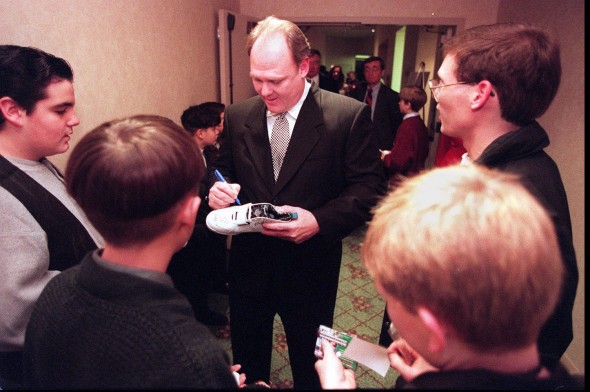
1990-99
Drew Bledsoe, WSU Cougars (not nominated): Precedent for including a WSU player on the ballot had already been established (Jack Thompson, 1976 and 1978, Clete Casper in 1981, and Mike Utley, 1988). Bledsoe could have appeared on the ballot in any of the years 1990-92, but especially in 1992 when he beat the Huskies in a Pullman blizzard, threw for 476 yards and two TDs in the Copper Bowl, finished eighth in Heisman Trophy voting, and became the No. 1 overall pick in the NFL draft (1993).
Derrick Cope, NASCAR driver (1990): Cope is best known for his win in the 1990 Daytona 500. During the last lap of that race, Dale Earnhardt ran over a piece of debris and cut a tire in turn three, causing him to nearly lose control. After narrowly avoiding most of the resulting debris, Cope assumed the lead and earned his first win in NASCAR competition. He became an overnight sensation, appearing on the David Letterman Show that week.
Fred Couples, golf (1992): Couples won one of the most prestigious golf tournaments in the world, The Masters at Augusta, in 1992, but couldn’t win the Star of the Year award. An equally deserving Edgar Martinez, that year’s American League batting champion, took the prize.
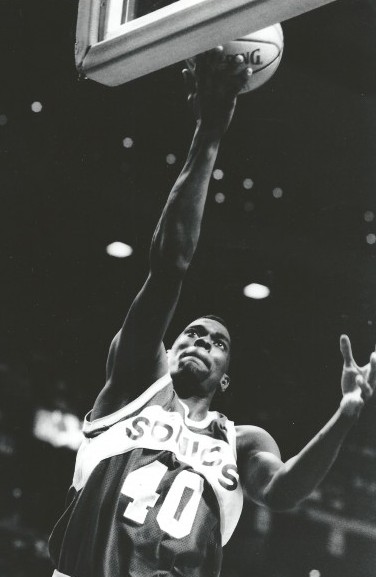
Corey Dillon, UW football, (not nominated): In 1996, Dillon blew away every UW rushing record, accumulating 1,724 yards (including 140 in the Holiday Bowl against Colorado) and 24 touchdowns. DE Jason Chorak received the UW’s nomination, probably because Dillon couldn’t — or wouldn’t — attend the Star of the Year banquet.
George Karl, SuperSonics coach (1996): Karl directed the Sonics from 1991-1998, leading them to the NBA Finals in 1996 where they lost to the Chicago Bulls in six games. The Sonics made the postseason in all of Karl’s seasons, won three division titles and eclipsed the 50-win mark every year. But 1996 was the only year Karl appeared on the ballot.
Shawn Kemp, Seattle Sonics (1992, 1993): The Reign Man made the All-Star Game five times while he was a member of the Sonics, but he made the Star of the Year dais only twice, losing to Martinez in 1992 and to Mariners pitcher Randy Johnson in 1993.
Cortez Kennedy, Seattle Seahawks (1991, 1992, 1999): Kennedy made a franchise-record (since broken) eight Pro Bowl teams, won the AP Defensive Player of the Year award on a two-win (2-14 in 1992) team, and entered the Pro Football Hall of Fame as a member of the Class of 2012. In Kennedy’s years on the ballot, he lost to Steve Emtman (1991), Martinez (1992) and Marques Tuiasosopo (1999).
Todd MacCulloch, UW basketball, (1998): A 7-foot center, MacCulloch in 1998 led the Huskies to their first appearance in the NCAA Tournaments Sweet Sixteen, averaging 18.6 points and 9.7 rebounds. He became the sixth player in NCAA history to lead the nation in field goal percentage two years in a row (he would three-peat in 1999, becoming the second to accomplish that feat), but he couldn’t overcome David Segui of the Mariners in Star of the Year voting.
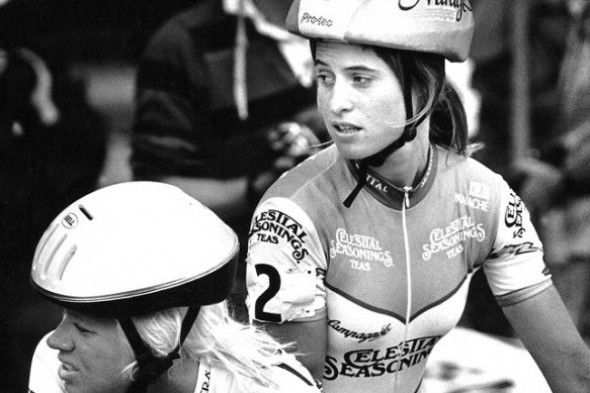
Lawyer Milloy, UW football (1995): A safety under Jim Lambright, Milloy got himself named first-team All-America by nine accredited selectors, a Husky record. But he couldn’t overcome the emotion that enveloped the Mariners in 1995, when Lou Piniella became Star of the Year.
Rebecca Twigg, cycling (1992, 1995): Twigg’s career began in the early 1980s and culminated when she qualified for the 1996 Olympics in Atlanta. In between, Twigg won six gold and one silver medal in World Championship competition, an Olympic bronze (1992) and a Pan Am gold. In her two appearances on the ballot, she lost to Martinez (1992) and Piniella (1995).
2000-present
Ray Allen, SuperSonics (2003, 2005, 2006): Acquired in a February, 2003 trade for Gary Payton, Allen proved to be one of the greatest shooters in Sonics history. Between 2003-07, he averaged 24.5 points per game and achieved a single-game high of 54 Jan. 12, 2007 against the Utah Jazz. In Allen’s years as a finalist, he lost to Matt Hasselbeck (2003), Shaun Alexander (2005) and Brandon Roy (2006).
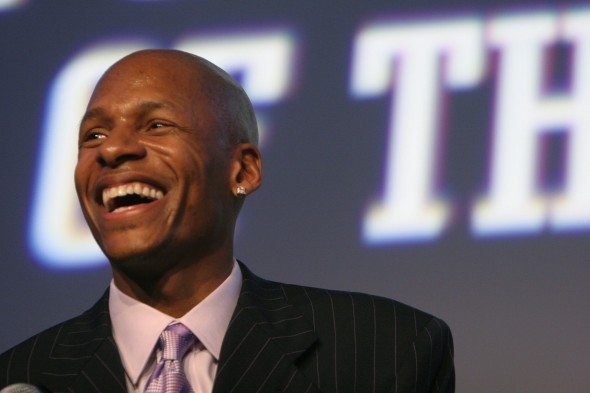
Walter Jones, Seattle Seahawks (2008): The best offensive tackle in the NFL for most of his career, Jones made a franchise-record nine Pro Bowl appearances during 14 seasons (1997-09), but received just one SOY nomination, in 2008. Three Seahawks won while Jones played, Hassselbeck in 2003, Alexander in 2005 and Bobby Engram in 2007.
Adam Morrison (not nominated): In the 2005-06 season, Morrison became a finalist for the Naismith and the Wooden awards, was named Co-Player of the Year with Duke’s J. J. Redick by the U.S. Basketball Writers Association, and won the Chevrolet Player of the Year award.
Cody Pickett/Reggie Williams, UW football (2002, 2003): During their three seasons together (2001-03), Pickett, the quarterback, and Williams, the receiver, set passing and receiving records that may last years. Williams appeared on ballot twice (2002-03), but Pickett, who threw for a UW record 10,220 yards in his career, never did.
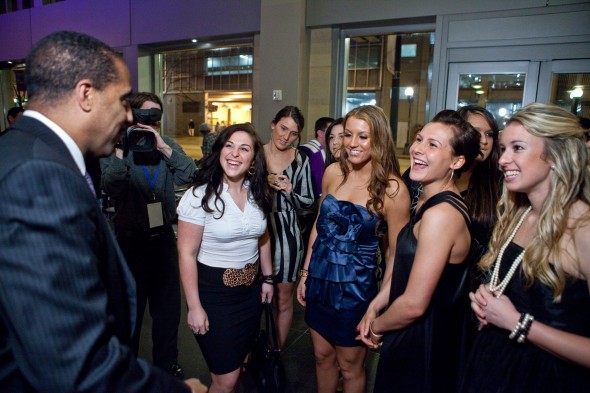
Nate Robinson, UW football/basketball (2004): Robinson’s best chance to win a Star of the Year award came one year after the only time he appeared on the ballot (2004). Robinson made third-team AP All-America in 2005, when the Huskies earned the first NCAA Tournament No. 1 seed in school history, reached the NCAA Tournament’s Sweet Sixteen, and finished 29-6. Unfortunately for the “Lord of Leap,” he squared off in the SOY finals against NFL MVP Shaun Alexander.
Lorenzo Romar, UW basketball coach (2005, 2009): Romar’s 2005 Huskies became the first in school history to earn a No. 1 seed to the NCAA Tournament (lost in the Sweet Sixteen and finished 29-6), and his 2009 squad went 26-8, also reaching the NCAA Tournament. Romar lost the SOY vote in 2005 to NFL MVP Alexander and the 2009 award to Felix Hernandez, the Cy Young runnerup.
Brad Walker, UW track (not nominated): One of the most successful track athletes in state history, Walker set an American record of 19-9¾ at the 2008 Prefontaine Classic, won gold at the 2007 IAAF World Championship (19-2½) and 2007 U.S. Track and Field Championships (18-8¾), in the process becoming just one of 15 men in history to make the “Six-Meter Club,” an organization reserved for vaulters who cleared 19-8¼. Alas, not even one SOY nomination for Walker.
——————————————–
ALSO SEE
Man Of The Year Winners (1935-76)
Star Of The Year Winners (1977-2012)
Wayback Machine: Sports Star Of Year (1935-49)
Wayback Machine: Sports Star Of Year (1950-59)
Wayback Machine: Sports Star Of Year (1960-69)
Wayback Machine: Sports Star Of Year (1970-79)
Wayback Machine: Sports Star Of Year (1980-89)
Wayback Machine: Sports Star Of Year (1990-99)
Wayback Machine: Sports Star Of Year (2000-11)
———————————————
Many of the historic images published on Sportspress Northwest are provided by resident Northwest sports history aficionado David Eskenazi.Check out Davids Wayback Machine Archive. David can be reached at (206) 441-1900, or at seattlesportshistory@gmail.com
